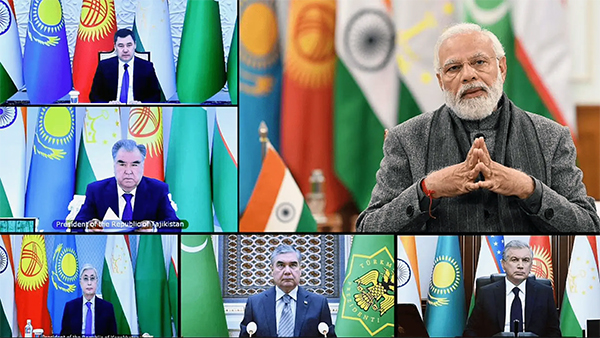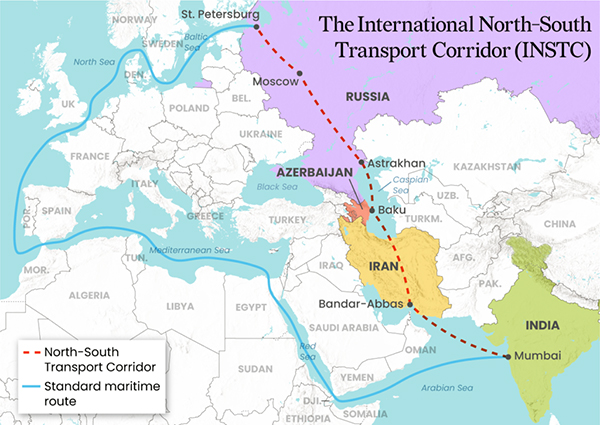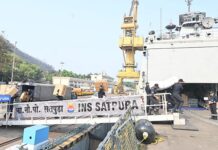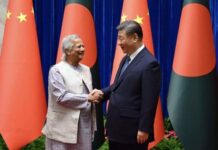
Prime Minister Narendra Modi held the first-ever summit meeting with the presidents of Kazakhstan, Kyrgyz Republic, Tajikistan, Turkmenistan and Uzbekistan virtually on 27 January. It came at a time when Chinese influence was growing in the Central Asian countries and their significance has increased with the Taliban takeover in Afghanistan.
This was seen as a foreign policy move that has not yet been taken by China or Russia, both of which have close strategic and economic ties with these five countries. With growing Chinese footprints in these countries in both the defence and security segment as well as the economic sphere, it has become imperative for India to have a “robust foothold” there, sources said.
India, which considers the Central Asian countries part of its “extended neighbourhood”, firmed up plans to hold the summit meeting when the foreign ministers of these countries visited New Delhi in December 2021 for the third round of the India-Central Asia Dialogue.
India had invited the presidents of the five Central Asian nations as chief guests at the Republic Day celebrations, which was to be followed by a summit meeting, but the plans were cancelled due to the spiralling third wave of the Covid pandemic.
PM Narendra Modi’s Address
Prime Minister Narendra Modi, addressing the virtual summit featuring presidents of Kazakhstan, Uzbekistan, Tajikistan, Turkmenistan and Kyrgyz Republic, on 27 January, talked about an ‘ambitious vision’ for the future.
In his initial remarks at the Summit, Modi said, “We all are concerned about the Afghan situation and this makes cooperation between India and Central Asia all the more important for regional stability and security.”
The prime minister called for defining an ambitious vision for cooperation between India and Central Asia in the coming years.
Mutual cooperation between India and Central Asia is essential for regional security and prosperity, Modi said.
Modi had paid a visit to all Central Asian countries in 2015. Subsequently, there have been exchanges at high levels at bilateral and multilateral forums.
The event was held to commemorate 30 years of the establishment of India’s diplomatic relations with these nations, witnessed unanimity on taking cooperation to the next level for boosting regional connectivity and security. The leaders agreed on considerably enhancing India-Central Asia trade, which is only about $2 billion at present, nowhere near China’s over $40 billion.
The prime minister and the five presidents decided to set up a joint working group on Afghanistan, with a broad consensus emerging on issues such as combating terrorism and drug trafficking.
Increased Significance
In July 2015, Modi became the first Indian prime minister to visit all Central Asian countries to boost strategic and trade ties. He also met the leaders of these countries in 2018 on the sidelines of the Shanghai Cooperation Organisation meeting that was held in Qingdao. However, the strategic importance of the five Central Asian countries “has increased” ever since the Taliban took over Afghanistan in August 2021. New Delhi believes these countries will prove to be beneficial for India in having some sort of a channel open with the Taliban regime that is currently in power in Kabul, they said, even as the Modi government has started sending humanitarian aid to Afghanistan.
Ties between India and Central Asia started taking a decisive turn as the US government signed the so-called peace deal with the Taliban in February 2020, and fears began to mount about Afghanistan in the aftermath of the NATO’s pullout. Prior to that India mostly looked at Central Asia from the perspective of energy ties.
As India closed all its embassy and consulates in Afghanistan, it also took the initiative to host the Delhi Regional Security Dialogue in November 2021, which was chaired by National Security Adviser Ajit Doval. All security chiefs from the five Central Asian nations attended the meeting along with Russia and Iran, to send a message to the Taliban government.
Chinese Influence
New Delhi’s Central Asian outreach assumes significance amid China’s efforts to strengthen ties with these nations that are part of the eight-member SCO, which also includes India. What gives Beijing a geopolitical edge is the fact that it shares borders with three of the five countries.
Two days before the India summit, Chinese President Xi Jinping interacted with Central Asian leaders and announced an assistance of $500 million to support livelihood programmes in these former Soviet bloc countries. He also listed several big projects of strategic importance that had been completed, including the China-Central Asia natural gas pipeline, the China-Kazakhstan crude oil pipeline, the China-Kyrgyzstan-Uzbekistan highway and the China-Tajikistan expressway. In a bid to counter the Chinese challenge, India has extended a $1-billion line of credit for infrastructure development projects and offered to provide more training slots and scholarships to meet the requirements of Central Asian countries.
After the recent unrest in Kazakhstan, Russia sent troops there as part of a peacekeeping mission to restore order, while China firmly backed the beleaguered nation’s efforts to curb violence.
Background
“The inception of the India-Central Asia Dialogue at foreign ministers’ level, the 3rd meeting of which was held in New Delhi from 18 to 20 December 2021, has provided an impetus to India-Central Asia relations,” said an official statement issued by the Ministry of External Affairs.
“The participation of the secretaries of National Security Councils of Central Asian countries in the Regional Security Dialogue on Afghanistan held in New Delhi on 10 November 2021 outlined a common regional approach on Afghanistan,” it added.
The issue of maintaining close ties with the Central Asian countries, when it comes to Afghanistan, was something that was also discussed between Prime Minister Modi and Russian President Vladimir Putin during the India-Russia Summit held in December 2021.
Besides, India is also keen to strengthen trade and energy ties with the Central Asian countries with a focus on increasing connectivity. New Delhi has pushed for the International North-South Transport Corridor (INSTC) and the TAPI (Turkmenistan Afghanistan Pakistan India) pipeline for natural gas during the summit.
Comments
The summit is a huge stride for India’s diplomacy and is a first step to carve out its zone of influence.
India should know what it wants out of the Central Asian region and use its influence accordingly. Countries with interests in Central Asia have their own groupings and connect: China from economic (BRI), Russia from strategic (CSTO), Turkey from ethnic (Turkic Council), and the Islamic world from the religious (OIC) It would be befitting for India to give a poignant cultural and historical perspective to the region through a summit-level annual meet. The aims are different – targeting Russia, sabotaging China’s BRI, thrusting Islamisation, economic linkages, military cooperation, trade, lobbying, etc.
Since the region is a critical lynchpin to India’s security policy, the summit will have a waterfall impact to facilitate India’s multifaceted approach towards the region. Central Asia carries no specific stance towards any country, with the exception of Russia. While their strategic visions are often opaque, they are wary of China.
For three decades, Central Asia remained a cauldron of outside actors. Today, the main security provider to the region is Moscow, which considers Central Asia as its ‘near abroad.’
After the US forces left Afghanistan overnight, the Islamists too have been eyeing to launch their holy jihads to establish new Khilafats there. Regional analysts have estimated that some 8,000 ISIS and Takfiri extremists have been waiting in North Afghanistan to infiltrate across the 2,245 km long porous border.
While leaders of all five states of the CAR have visited India, yet, India’s commercial success has been negligible at a paltry $1.4 billion trade in 2019.
In 2017, India joined the Shanghai Cooperation Organisation (SCO) but SCO is only a sluice gate to regulate the Russian and Chinese and prevent them from dominating the region. Moscow tends to use it for regulating India-China tensions.
India’s civilisational influence and still enjoys a range of attributes. The Ferghana Valley was India’s crossing-point (to Uzbekistan, Kyrgyzstan and Tajikistan) on the Great Silk Road to connect with China and Europe. Buddhism spread to the rest of Asia from here. This can be the basis of an annual summit. A string of cultural events highlighting the facets of medieval culture, art and painting, including Sufi traditions, should be highlighted.


















